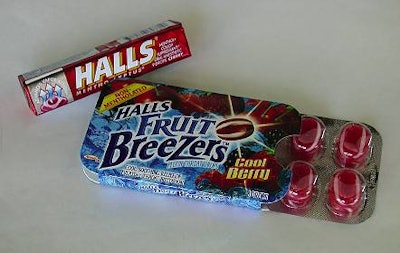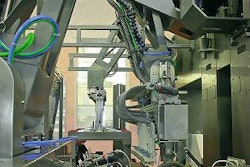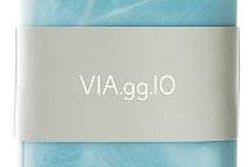To manage contract packaging effectively, you have to use the right tactics. They differ for each project. They vary for each consumer packaged goods company (CPG) and for divisions within each company. And they differ by product category.
But within all those variations, some key steps can deliver a contract-packaging project with solid bottom-line impact for a CPG. Consider these steps in any contract packaging effort:
• Thoroughly assess the decision to outsource.
• Assure that the product will run efficiently on the contract packager’s line.
• Confirm redundancy in the contract packager’s facilities.
• Be sure you can effectively communicate details of the project to the right people.
• Demand strong quality audit provisions.
• Develop and maintain a good working relationship with the contract packager.
These tactics and details on how to use them are among top-line conclusions in a new research report. It is titled Contract Packaging: Strategic Opportunities & Profit Potential, and it is published by Packaging Strategies.
The report assesses the contract packaging market’s scope, and it gives financial analyses of contract packaging projects. The following information is excerpted from the report and includes comments from its principal authors.
Assess the decision to outsource
The decision to use a contract packager is a complex make-versus-buy analysis. Making the decision requires assessment of multiple factors. It has to respond to the needs of marketing, finance, operations, and other functions within a CPG.
Time-to-shelf is a critical factor in the make-versus-buy decision. But it is not the only factor. Competitive threats, capital costs, and ROI or payback hurdles are others.
The research report offers a matrix to assess all the factors. From a management perspective, each factor needs to be answered as part of a risk assessment matrix that looks at four aspects:
1. How important is the factor?
2. What is the likelihood of failure?
3. How severely would a failure impact business plans?
4. And what are the contingency plans if a failure occurs?
An illustration of how the grid works involves analyzing time-to-shelf requirements. In the example, a CPG needs to answer this question: How fast do we need to fill the pipeline and get a product to market?
“If the company has to be first to shelf with a significant product or packaging innovation, then speed to market may be highly important,” explains Michael Richmond of Packaging & Technology Integrated Solutions (PTIS). The Kalamazoo, MI, consultancy is one of the study’s principal contributors.
Richmond points out that the time-to-shelf assessment needs to consider all launch components—sales samples, test-market product or regional or national rollout requirements. Time to shelf may be important for an innovative product, but the importance may be lower if a company introduces a “me-too” product.
In the example illustrated in table below, the company assigns high priority to time-to-shelf. The next step required by the matrix is an assessment of the risk of failure.
In the example, managers assess the risk of failure as “medium.” They have intelligence on competitors’ progress and believe that those competitors are well behind in developing product. The managers also know they have equipment delivery commitments that will get product on shelves at the right time.
The next step in using the grid is to assess the impact of failure. In the example, the managers believe that the severity of failure would be “high” because of lost market share if a competitor gets to market first. “One rule of thumb used by some CPGs is that it costs $20ꯠ per day for not being on shelf,” Richmond offers.
That adds emphasis to the fourth element of the matrix—what is the contingency plan? In this example, the company plans on producing the product internally. The contingency plan is to have a contract packager in place should any delays develop in getting its own equipment. That contingency addresses the severe impact of any failure to meet time-to-shelf requirements.
By extending the decision-making grid, a CPG can assess all the factors influencing the contract packaging decision, including financial factors.
Assure the product runs right
In the ideal situation, a CPG should have the time to do test runs of a product at the contract packager. Even subtle variations in a product’s density, texture, and flow can affect how it runs. For example, a product’s tendencies to “bridge” and “hang up” in handling equipment may vary with small variations in product formulation. Another consideration: Will the product leave residue on handling surfaces that slow the packaging process?
In product launches where timelines or cost factors limit test runs, it is critical to be sure that a contract packager has run the same product for another CPG. If that experience isn’t available, evaluate a contract packager who has run a similar product. Consultants caution, however, that the subtle differences in product may affect running efficiency. Ask specific questions. If a contract packager’s expertise has been in “salty snacks,” it makes a difference to ask if those products were chips or pretzels.
That same analysis is applied to packaging specifications. For example, a contract packager has to hit seal-strength specs. Seals have to be secure, but they can’t be too hard to open when the consumer gets the package.
Pull force on an easy-opening feature is another specification to be evaluated. The age and sophistication of the contract packager’s equipment may affect the ability to stay within the specification. For example, older machines with less sophisticated controls may not be as forgiving on some specifications as newer equipment.
The technology you need
Does the contract packager have the technology you need? Some contract packagers have an R&D group and advanced equipment. CPGs need to evaluate whether those capabilities respond to the CPG’s business needs and business model.
For example, some companies are marketing organizations that outsource all of their production. They may need significant R&D capabilities from their contract packagers.
One measure of a contract packager’s R&D capability is the size of its R&D staff. Do its research facilities have state-of-the-art equipment, including equipment analytical labs? Another factor is the contract packager’s relationship with outside consultants. Those may include material and packaging design consultants, and they may include specialists such as distribution packaging consultants.
Investigate whether a contract packager has a history of innovation—that includes innovative packages and innovative manufacturing processes. What kinds of new products has it run before? Is its packaging line equipment state of the art? Does the company have a history of being among the leaders in using new packaging processes?
In some cases, that capacity is surprisingly available. The increase in aseptic products has been facilitated by packaging capacity at contract packagers. Equipment at contract packagers spurred the growth of the stand-up pouch.
From a management standpoint, an important issue is the contract packager’s willingness to let the CPG’s staff work directly with its R&D staff, rather than going through a sales or customer service contact. If product and package development is an important part of the service a CPG is buying, it is important to have direct contact for both quality and timeliness of work.
Another gauge of the contract packager’s ability to support R&D and package development is its relationship with suppliers. Who are those suppliers, and do they have a reputation for being innovative?
Redundancy
Can the contract packager deliver, even if its primary production site suffers an event that limits output? How much redundancy does the contract packager have in equipment and facilities? Notes Brian Wagner of PTIS, “From the CPG’s perspective, the question to ask is: ‘How critical is it to you to lose production capacity, even for a limited period of time?’ ”
Does the contract packager have multiple locations? Across those locations, does it duplicate packaging lines and processes?
Effective communication
Clear communications are even more important in managing contract-packaged projects than in managing internal packaging projects.
“With internal packaging projects, standard procedures and templates for packaging elements are often in place. The date code is in the same place each time,” Michael Richmond explains. “But a contract packager, who runs different products for different CPGs, may not have those procedures in place because different clients want different formats.”
What that means is that a CPG needs to set up clear channels of communication within the contract packager’s organization. Those channels need to go beyond the sales and customer service contacts and include direct communication with operating managers.
Date codes illustrate the need for extra diligence. A code’s location on a package may be different than the location for similar codes on other containers the contract packager runs. The format (manufacture date code or “best by” codes) may differ from other products run by the contract packager.
When a CPG prints codes on internally packaged products, line operators and supervisors often have a standard format and template they understand. However, those templates and operating staff familiar with them may not exist at a co-packer. In that event, the CPG has to be sure to communicate that difference with the production staff.
Bar codes and human-readable codes on cases and pallets also require close coordination. Retailers have strict standards on incoming case and pallet codes. CPGs must have the communications that assure the contract packager understands just what those standards are. As radio-frequency identification standards emerge from retailers, the standards become more important.
Quality audits
Have a detailed quality audit agreement with the contract packager.
“One way of assessing the contract packager’s quality program is to look at staffing,” Richmond explains. “Also, how well-equipped is the QC (quality control) department?”
Richmond suggests CPGs see what factors the contract packager checks and whether they are correct factors for the CPG’s job.
Record-keeping is another central point in a contract packager’s emphasis on quality. Does the contract packager have procedures in place for tracking shipped materials? That includes both in-bound and out-bound products.
That ability may be particularly important in a contract packager’s warehouse. There, a greater possibility exists of mixing product and packaging supplies. For example, if a CPG finds that some packaging materials are causing off flavors, can the contract packager determine where all the packages made in that shift are located? Can they tell which packages were made from a specific lot of empty packages?
On-site inspections indicate a contract packager’s commitment to quality. Are the plants clean and orderly? Does the contract packager follow GMPs and HACCP programs?
The working relationship
CPGs are moving toward a concept of an integrated value chain model. In that model, everyone involved participates in developing and monitoring a process. That includes different functions within the CPG’s staff. It also means including outside vendors such as contract packagers. Is the contract packager, along with other vendors, truly “on the team”?
Wagner notes that establishing that relationship isn’t a “one-time” activity.
“If you are a CPG, you have to keep working on the relationship,” Wagner says. “You also have to develop a contingency plan that responds to this question: ‘What is the business impact if that kind of relationship doesn’t develop or if it disappears during the course of the project?’ ” [CP]
The author, Jim Peters, is president of J. Peters Associates, Oak Park, IL. Contact him at 708/267-3743 or [email protected].
See sidebar to this article: Report details contract packaging's future





























